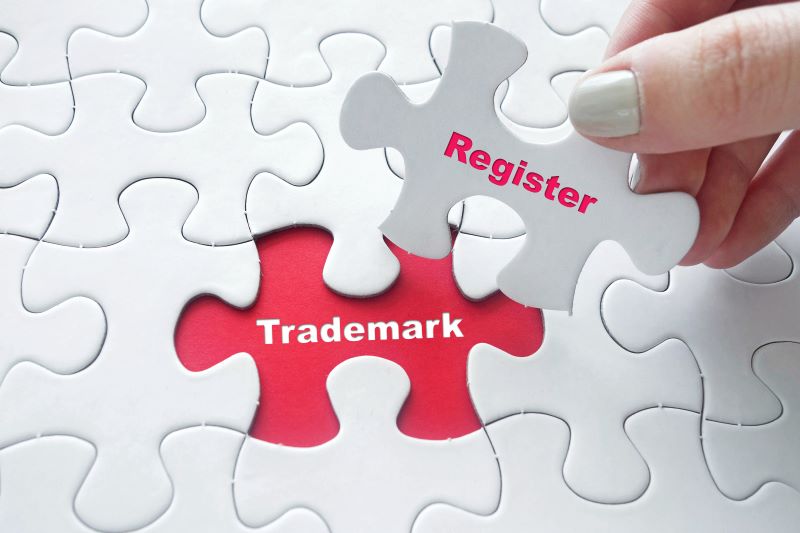The very idea of adopting a “new” Law with some considerable changes (not only with respect to the issue at hand) came from, among other things, the need to harmonize the national regulations with those in force in the European Union. That was especially important since Chapter 7 (which refers to intellectual property) in the negotiations to access the European Union was opened. Accordingly, Serbia accepted the legal principles of the EU in this area and undertook to implement them before the accession. Moreover, the need to harmonize the regulations referring to the exaustion of rights and parallel imports was also necessary from the perspective of the Serbian Competition Commission, which had been advocating for the necessity to change the principle in its opinions for years before the new Law on Trademarks was adopted. The ratio for this view was to enable competition on the market by allowing parallel imports, consequently leading to a larger number of bidders, which would ultimately have an impact on the market price of the product.
Now, almost three years after the principle of international exaustion of rights was re-introduced in the Serbian system, and on reflection, it is questionable whether Serbia has indeed been following the principles of the EU laws, and what the practical consequences of such change are.
Already at first glance, it can be noted that the provision of Article 53 of the Law on Trademarks (by which the principle of international exhaustion was re-introduced) does not exactly follow the model from the EU system. Namely, paragraph 1 of Article 53 prescribes the following:
“The proprietor of the trade mark is not entitled to prohibit the use of the sign protected by a trade mark, in relation to goods marked with it, which have been put on the market anywhere in the world by the proprietor of the trade mark or another person authorized by the proprietorr…”.
On the other hand, the corresponding legal provision of Article 15 of the Directive (EU) 2015/2436 of the European Parliament and of the Council prescribes that:
„(a) trade mark shall not entitle the proprietor to prohibit its use in relation to goods which have been put on the market in the Union under that trade mark by the proprietor or with the proprietor’s consent“.
It is obvious from the above that different systems of exhaustion of rights are in place in Serbia and in the EU.
As a reminder, the concept of exhaustion of rights represents a type of limitation of intellectual property rights. Namely, it limits the right holder’s freedom to carry out further control of the goods marked with his trademarks after he has put them into circulation for the first time in a certain territory. Hence, the key question here is to what extent the right holder can control the goods once put into circulation by him (personally or with his consent)? In that sense, we can distinguish three systems of exhaustion of rights:
- International (currently applicable in Serbia): The right of the right holder is considered exhausted when he or a person authorized by him (that is, any person who has his consent) puts the goods marked with trademarks registered in the name of the right holder into circulation for the first time anywhere in the world. Accordingly, parallel imports (with certain exemptions that may apply) are allowed.
- Regional/Limited (currently applicable in the European Union): The right of the right holder is considered exhausted when he (or a person authorized by him) puts the goods labelled with his trademarks into circulation for the first time in any of the countries belonging to a certain region/group of countries. Hence, the possibility of parallel imports is limited to the specified region/group of countries.
- National (which was applicable in Serbia from 2013-2020): The right holder is entitled to prohibit the use of his trademark in connection with goods that have not been placed on the market by him personally (or by persons authorized by him) in the territory of a specific country. Hence, parallel imports are not allowed.
As stated above, depending on the accepted principle, parallel imports can be forbidden, allowed, or limited.
Although critics of the national system of exhaustion of rights would say that it is too limiting, that it gives great freedom to the right holders, and hinders the principle of free competition in the market, the question is whether the international principle of exhaustion was the right choice for Serbia in this case?
Firstly, as we have seen from the above, it differs from the EU system, despite the fact that one of the main ideas was to harmonize the laws in the process of accession to the EU. Secondly, the only exception to the introduced principle prescribed in Paragraph 2, Article 53 Law on Trademarks (“Provision of paragraph 1 of this Article shall not apply where there exist legitimate reasons for the proprietor to oppose further commercialization of the goods, especially where the condition of the goods is changed or impaired after they have been put on the market.”) is very limited, while in the European Union, parallel import is allowed between member countries in their unique trade market; however, even there it can still be limited in many situations.
Such an approach, which provides almost unlimited freedom to parallel importers, is questionable both from the right holders’ and from the consumers’ perspective. Namely, the right holder invests significant effort and resources in creating his own brand. This usually involves a series of time consuming activities, such as performing different tests and analyses (from business, legal, strategic, etc. aspects), which can sometimes result in many years passing before the brand itself is created and certainly before it is placed on the specific market. Not to mention that investing in a brand never really stops. Brand owners first put in the effort to create and develop their brands, then to gain a reputation and, finally, to maintain it or to improve on the quality of its products, that is to justify the trust of the consumers. Moreover, nowadays the need for innovation, which requires constant investments, is more important than ever.
In this way, a special bond between brand owners and consumers, based on their mutual trust, is created. From the point of view of a rights holder, the channel of distribution of goods labelled with his trademark(s) is highly important. However, it is no less important from the consumers’ point of view. On the contrary, it is even more important for consumers to be familiar with the distribution channels of the brand as this will create a sense of security for them. By knowing exactly the “source” of the specific branded product, the consumer will have no doubt that they will receive the quality that they expect and are used to.
Furthermore, the issue of quality, health, and security standards, which differ from region to region (country to country), is also very important. In that sense, it is possible that these standards for the European market and, for example, for Asian or Australian markets are not the same. Moreover, the appearance of the packaging can also differ, depending on the country. Therefore, once parallel imports are allowed, it is theoretically possible that a product intended for the Asian market, for example, ends up on the shelves of drugstores or supermarkets in Serbia, in which case there will be no trademark infringement (unless the exceptions can be applied). Although the packaging will probably differ, the consumer will certainly recognize the brand and the mark; however, a certain level of uncertainty will remain. Moreover, it is questionable if the subject product will meet all the standards expected.
A challenging task has been set before the authorities in this regard. Namely, they are expected to be aware of, and react timeously to, any potential problems, which can be made more difficult in situations where numerous products from the same brand are being imported from all over the world.
When it comes to the practice of the courts in Serbia, the same is not precisely formed yet and it is to be seen especially in which way the courts will interpret the exemption prescribed by Article 53, Paragraph 2, of the Law on Trademarks. With regards to the cases initiated at the time when the previous version of the Law was in force, the courts generally took the attitude that, as a result of the act of parallel import, trademark infringement was committed; however, due to the new legal principle, the same act has not been forbidden pro futuro.
It is important to mention that this topic has been regulated differently in the regions, some of which are faced with disparities between the law and the practice. For example, North Macedonia adopted a national system of exhaustion of rights, which is prescribed by Article 209 of the Law on industrial property, while the Supreme Court in its judgements (starting) from 2020 and 2021 has taken the stance that parallel imports do not constitute trademark infringement. In its judgements, the Court has held that the (original) products cannot mislead the average consumer as to the origin and quality of the subject products. Moreover, the Court concluded that it is up to right holders to forbid their worldwide partners from importing the products in North Macedonia and, in specific cases, to submit evidence of such ban, as well as to inform the Customs Authority of the entities which are allowed to import their products (“exclusive importers”). Such practice in North Macedonia is questionable having in mind the explicit provision of Article 209 of the Law on industrial property, as mentioned above. It remains to be seen if such practice, which seems to be inconsistent with the explicit provision of the Law, will be changed in the future or if the Law itself will change.
The national system of exhaustion of rights is also applicable in Albania, as prescribed by Article 158, Paragraph 1 of the Albanian Industrial Property Law. The exemption, prescribed within Paragraph 2 of the same Article, is applicable if there are legal or other reasons for the owner to oppose the further distribution of the goods, especially when the condition of the goods has changed or the goods are damaged.
On the other hand, besides Serbia, Bosnia and Herzegovina also adopts an international system of exhaustion of rights, which allows parallel imports, as prescribed in Article 51, Paragraph 1, of the Trademark Law. The exemption to the exhaustion can be applied when there are justified reasons for the right holder to oppose the further commercialization of the goods, e.g., if the goods have been changed or impaired.
Last but not least, Montenegro and Kosovo have adopted a specific, international, but limited (socalled semi-international) system of exhaustion of rights. Namely, according to Article 15 of the Montenegrin Law on Trademark, a trademark owner cannot prohibit the use of his trademark in relation to the products he has placed 1) within the country 2) in any member state of the European Union or 3) in any member state of the European Economic Area; while the Trademark Law in Kosovo that has recently entered into force (July 28, 2022) has adopted a very similar solution. Besides the above-cited areas, a trademark owner in Kosovo cannot prohibit the use of his trademark in relation to the products he has placed in: any state of the Western Balkan region or any state with which Kosovo has a free trade agreement or trade facilities.
As can be seen from the above, this topic has been regulated in different ways in the regions even though the majority of countries are either in the candidate status or in the potential candidate status in the accession to the EU. In general, we believe that for all the cited jurisdictions it is important to follow the same principle, not only because of the necessity of harmonization with the EU, but mainly because some sort of “free trade” would exist between neighbouring countries if all of them were to accept a regional/limited principle of exhaustion of rights. Also, it is much more reasonable to overcome the national system(s), which is controversial from different aspects, by adopting a system that would provide more competition possibilities and, as such, more choice for the consumer, but at the same time a sort of a control for the right owners. This kind of solution is also feasible from a practical point of view since certain regions and countries that are parties to specific trade agreements usually have the same or similar standards in terms of health, quality, etc., as well as the same appearance when it comes to the packaging of products.
By opting for this approach, it seems that a win-win solution could be achieved, where consumers would have certainty when choosing their favourite product; quality, health and security standards would also be fulfilled, meaning “less worries” for the authorities; and, finally, brand owners would retain control over their product placement at least to a certain extent.




